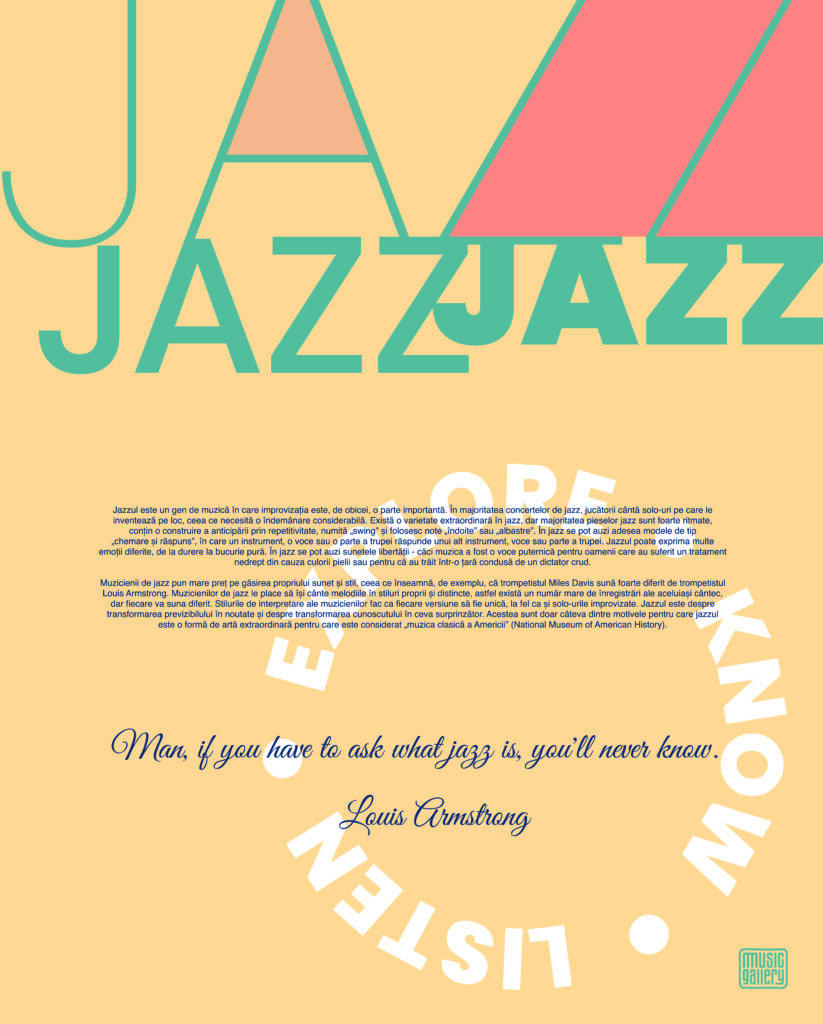JAZZ, JAZZ, JAZZ

(P24) JAZZ, JAZZ, JAZZ
Jazz is a music genre in which improvisation is usually an important part. In most jazz concerts, players perform solos that they invent on the spot, which requires considerable skill. There is an extraordinary variety in jazz, but most jazz pieces are highly rhythmic, contain a sense of anticipation through repetition, called „swing,” and use „bent” or „blue” notes. Jazz often features call-and-response patterns, in which one instrument, voice, or part of the band responds to another instrument, voice, or part of the band. Jazz can express many different emotions, from pain to pure joy. Jazz can be the sound of freedom – as the music was a powerful voice for people who suffered unjust treatment because of their skin color or because they lived in a country ruled by a cruel dictator.
Jazz musicians place great value on finding their own sound and style, which means, for example, that trumpeter Miles Davis sounds very different from trumpeter Louis Armstrong. Jazz musicians like to play their melodies in their own distinct styles, so there are many recordings of the same song, but each will sound different. The musicians’ individual playing styles make each version unique, as do the improvised solos. Jazz is about transforming the predictable into something new and turning the familiar into something surprising. These are just a few reasons why jazz is an extraordinary art form and is considered „America’s classical music” (National Museum of American History).
Man, if you have to ask what jazz is, you’ll never know. – Louis Armstrong



